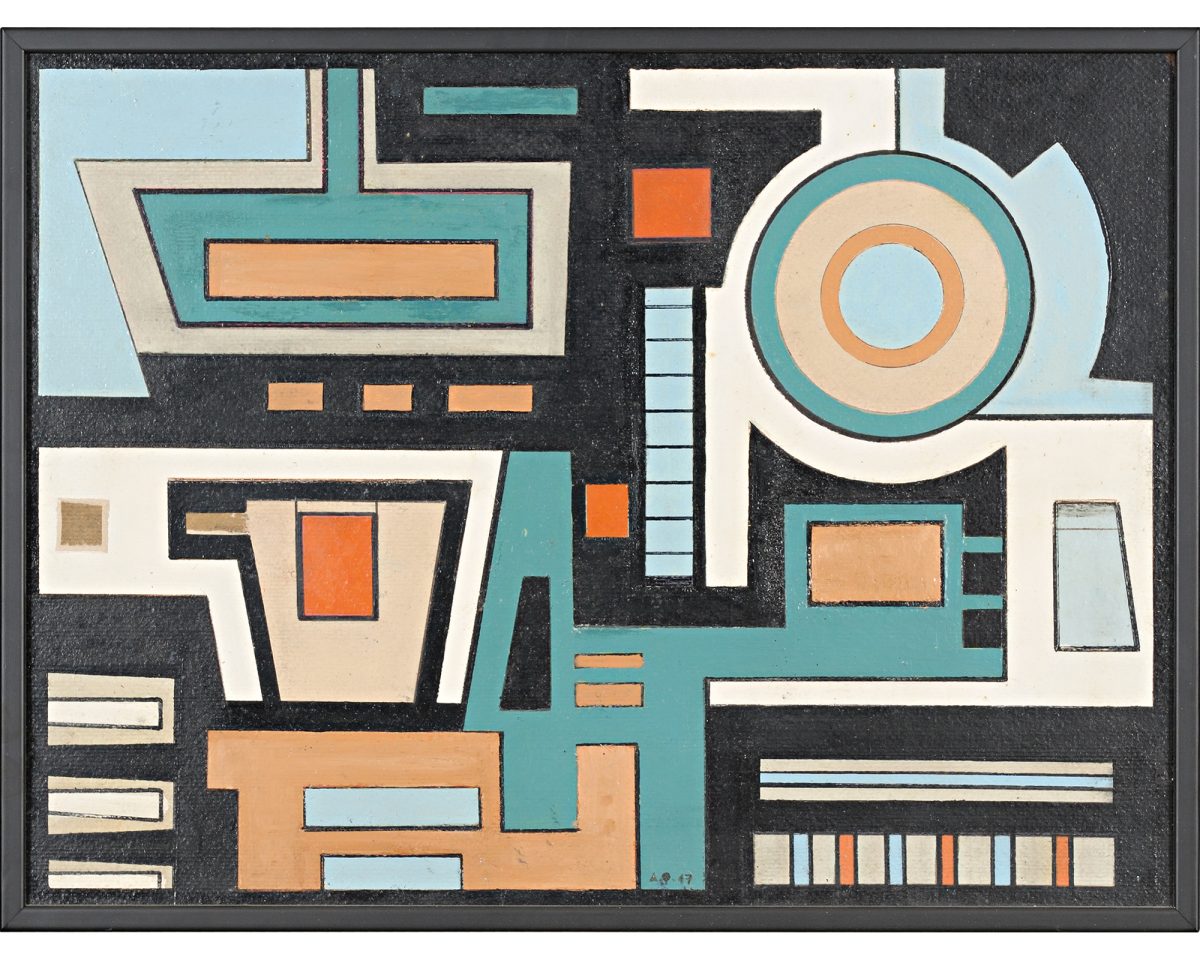
Born in 1913 in Riviera, Uruguay, Carmelo Arden Quin became interested in art at a very early age thanks to the Catalan writer and family friend Emilio Sans, and he soon began to paint. In 1935 he met Joaquin Torres-Garcia, who had just returned from Europe where he had frequented Piet Mondrian and Michel Seuphor with whom, in 1930, he had founded the group “Cercle et Carré”. Very soon, in Montevideo, Torres-Garcia became the mentor of the young Arden Quin who followed his aesthetic precepts and was also struck by his transformable and flexible sculptures. However, in 1936 Arden Quin went beyond the traditional boundary of the rectangle to create, in a programmed and not random manner, the first non-orthogonal and irregularly-shaped works in the history of art, an undertaking that was to increasingly be a kind of “polygonal conscience”. In the same year some of these works were exhibited at the Casa de España in Montevideo.
Towards the end of 1937 he moved to Buenos Aires, where he frequented avant-garde artists and where he enrolled for the courses of the philosophy and literature faculty. In 1938 he became part of the “Grupo de pintores de vanguardia” together with Guy Ponce De Léon, Pablo Becker, Luis Lloret Castels, and Amaury Sarmiento. In 1941 he was one of the founders of the bimonthly magazine “El Universitario” through which his political and aesthetic ideas were diffused. In 1944, after a long period of development, he founded the Arturo group and published the magazine of the same name, together with Gyula Kosice, Rhod Rothfuss, Tomás Maldonado and others. In it he elaborated an aesthetic theory based on a materialist dialectic. Also involved in the publication were Murillo Mendes, Vieira da Silva, Vincente Huidobro, and Torres García.
In 1946 the group split into the Asociación Arte Concreto Invención group and the Gruppo Madí, the manifesto of which Arden Quin had had read aloud in public on 3 August 1946 at the Institut Français des hautes Études in Buenos Aires.
In this period, he was making works with polygonal frames, and he abandoned a flat and frontal vision in favour of irregular, curved forms which, later on, he was to call “Formesglbée”. Furthermore, he began to make his “Coplanals”, works consisting of various polygons, at times joined together and at others separated, or else moving works and picture-objects.
Having moved to Paris in 1948, Arden Quin began to frequent the artists and major exponents of European and international culture: Vantongerloo, Michel Seuphor, Marcelle Cahn, Auguste Herbin, Jean Arp, Georges Braque, Francis Picabia and other avant-garde artists. He created the Centre de Recherches et d’Études MADI in his studio in Rue Froidevaux. He experimented with works with various colour combinations and mobile structures, and together with the Madí group he exhibited annually at the Salon des Réalités Nouvelles, as well as at Colette Allendy, Denise René, and Suzanne Michel, to mention just a few of the important galleries of the period.
In the 1950s he created works from white plastic or lacquered and polished wood. This was a very long procedure, given that each layer had to dry perfectly before the next one could be applied. In 1954 in Buenos Aires he founded the Arte Nuevo group which held its first show at the Van Riel gallery. In Paris he published “Opplimos” and edited the magazine “Ailleurs”; in the 1960s he took part in the Concrete Poetry movement. He made mobile works and, until the 1970s, he made use of collage, decoupage, and picture-objects, while he continued to experiment with the “H” form which gave rise to fragmented reliefs, open in two directions. In 1970-71, after a gap of fifteen years, he returned to painting and made the “Coplanals” and “Formesgalbées”.
In the last decade of the twentieth century and in the 2000s he took part in important exhibitions in Europe and America, among which the show Latin American Artists of the Twentieth Century at MoMA, New York. Arden Quin died in Savigny-sur-Orge, on the outskirts of Paris, in 2010.
His works are to be seen today in major museums throughout the world.
